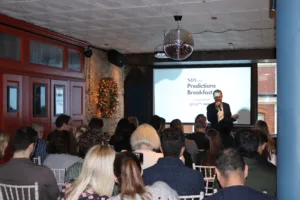By Nick Crawford, Head of Strategy at Jarrang
After months of closures, doors have now reopened for many hospitality and leisure businesses, with some establishments looking at being full for the rest of 2021. This is happening in other sectors too, and there’s a lot we can learn as a marketing industry, when we look at taking three steps to maximise future revenue even when you’re currently at capacity. Some may be overwhelmed with customers, as the pent up demand is released, but marketing silence is not the solution. Maintaining audience engagement is key to nurturing the relationship between you and your past and future customers to ensure long term revenue from them.
In marketing, it’s our job to create an impact – from anticipation to post-interaction of a product or service. This impression is fundamental to customer loyalty and the profitability that comes with this, when done well. Here I discuss three strategies to consider, to ensure “Customer Lifetime Value”, and how these can be implemented to complement tactical sales communications as part of email marketing.
1. The full customer journey: It’s known that consumer loyalty and revenue spend is enhanced by the customer experience. By breaking down the consumer journey into key moments, we can identify the needs, wants, ambitions and fears of prospects and customers, at that moment. Creating campaigns that meet these needs or address any concerns, will help when the recipient is considering their next move. Any marketing strategy should embrace the idea that the true customer experience starts the moment they start to receive communications, and not from when they are in receipt of the product or service. Well-executed communication with customers before, during, and after their purchase can greatly improve the quality of their experience, ultimately evolving them into returning customers and evangelists of your business.
2. Always on automated sends: Are there behavioural signposts in your business that you use to trigger key communications? Use these opportunities to create timely, relevant and valuable customer communications. For example, ahead of their purchase, sharing emails that build anticipation, inform them with useful details and potentially upsell will lead them to get excited about what they’re about to receive, and could also gain extra revenue, win-win! Once they receive their product, could you add a personalised touch to check that they’re happy, and offer a simple solution if they’re not? Getting ahead of the customers’ thinking can be key.
They say that thankyou’s go a long way, and isn’t that true! After their purchase, thanking guests is a sure fire way to improve the quality of their experience, even once they’ve had what they’ve paid for.
3. The art of the soft sell: Just because your hotel, cruise, venue, is fully booked, doesn’t mean you should stop sending emails. Soft-sell nurturing emails will keep people engaged with your brand. Email marketing is your opportunity to maintain the relationship with your prospects and customers. Don’t be that brand that only communicates when you want something. Your customers deserve more than just ‘buy now!’ messages.
So – even in times of high capacity, stopping your emails is not the solution. If you’re adding value to a person’s inbox, the long term benefits are huge. Ensuring that the customer’s journey is anchored throughout by your emails – welcoming them and informing them. Keep your brand front of mind for now and for the future by entertaining and sign-posting them to valuable content. This will both deliver a fantastic brand experience and create long term profitable loyalty.









